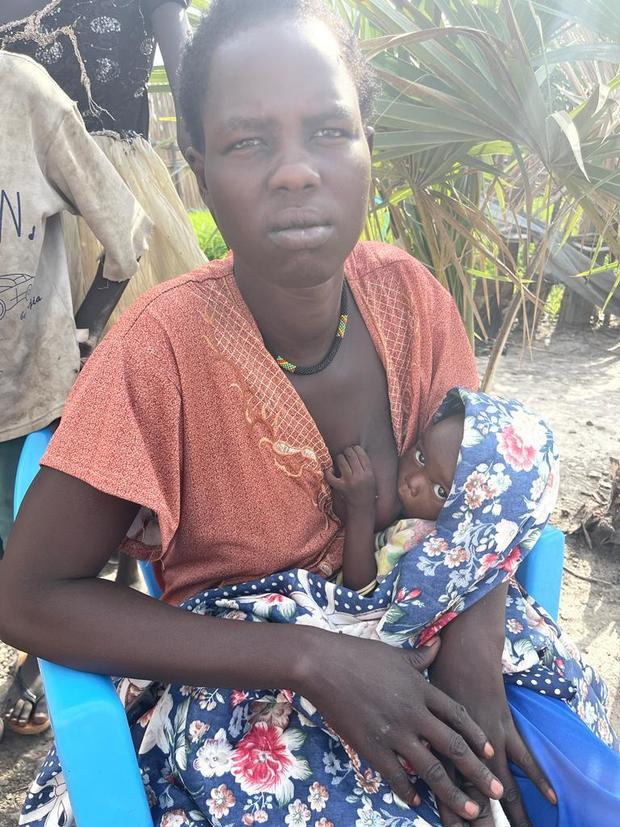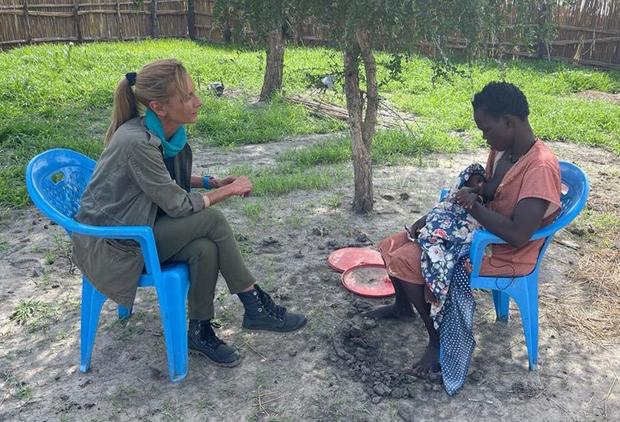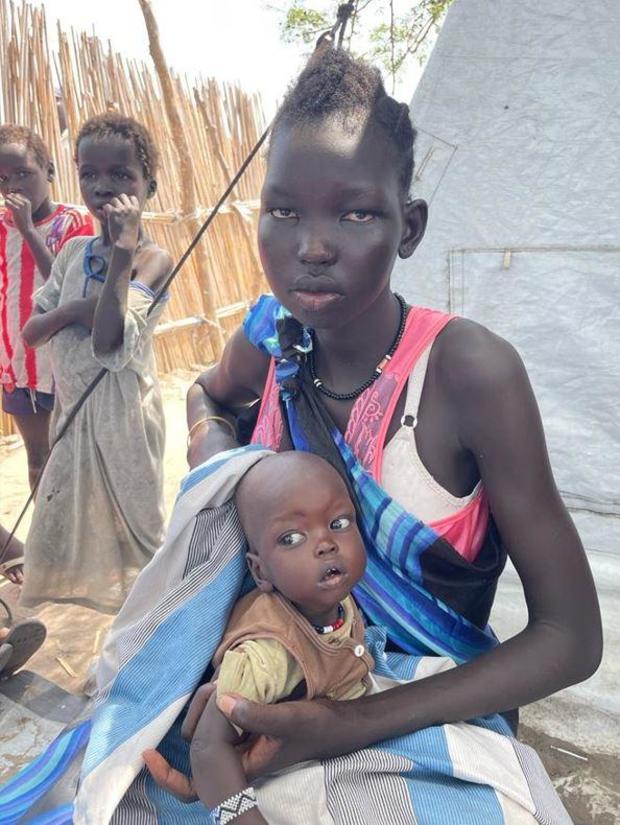How Russia's war in Ukraine is starving kids to death 3,000 miles away
New Fangak, South Sudan — Unprecedented rainfall has inundated the northern part of South Sudan for almost three years, bursting the banks of the Nile River and submerging the surrounding land, along with the farms and homes on it. South Sudan is on the front line of climate change, which has brought the devastating floods, and along with it, famine.
The situation in the country was already dire, but the war raging 3,000 miles away in Ukraine has made it much worse.
That war has sent food and fuel prices soaring, and it has also sapped funding to aid organizations like the United Nations' World Food Program (WFP).
What that means in human terms is that thousands of people like Nyabany Kong go to bed hungry every night.
She used to eat once a day. Now, she knows what it's like to stare death in the face.
"It's been a long time without food," Kong told CBS News correspondent Debora Patta. "I last ate two weeks ago."
South Sudan is a famine zone.
Along with hundreds of thousands of others, Kong fled to the central state of Jonglei to escape the relentless flooding in the country's north. Their homes and crops washed away, they can no longer grow the food they used to live off.
Now they're on dry land, and while some people told CBS News they managed to catch a few fish locally, and even eat water lilies to stave off the hunger pangs, most of those in Jonglei live entirely on WFP food rations.
The five people in Kong's family are living on WFP rations meant for just two people, however.
Her husband drowned in the flooding. Her emaciated mother-in-law Nyakong Chang has no idea how old she is, but she knows she's never been this hungry in her life.
Kong lost her first-born child to hunger and, when Patta met her, she was incredibly worried about her 10-month-old son Chuol. So short on calories herself, Kong's weakened body won't make enough milk to feed her son.
Baby Chuol is one of hundreds of thousands of severely malnourished children in South Sudan relying entirely on help from the WFP to survive.
At a makeshift clinic in Jonglei's Canal Pigi district, mothers bring their babies to be assessed by nutritionist Mona Shaikh.
"We see she's already in the red," Shaikh said as she examined another frail child's body. "She's in a very risky situation, because if she gets one bout of diarrhea or malaria, I'm afraid, you know, any child like that, we are very close to losing them... within days."
Every single baby measured while CBS News was at the clinic was "in the red" — meaning severely malnourished. They were just days away from dying if they didn't get immediate help. A simple bout of diarrhea could easily drain what life is left from their bodies.
Most of those who have fled to Jonglei survive on the WFP's food rations. Each ration used to contain enough sorghum, lentils, oil and salt to feed a person for three weeks. But like other humanitarian crises around the world, South Sudan's grim circumstances have been compounded by the war in Ukraine.
With the cost of both food and the fuel needed to move it around soaring, the WFP was forced to slash the size of the rations it provides to many people in South Sudan.
The aid agency used to provide people with 2,100 calories per day in the rations, but Shaikh told Patta, "in most of the locations now, we are forced to give only half of that." Most nutritionists recommend adults get around 2,000 calories per day, and many Americans consume almost double that. Now the WFP rations in South Sudan offer only about 1,020 calories.
The WFP has been forced to slash not only the size of its rations, but the number of people it can provide them to in the country. The agency has suspended aid to 1.7 million of the 6.2 million people it had been feeding in South Sudan — a sort of emergency humanitarian triage to cope with the huge cost rises.
As President Joe Biden prepares to meet fellow G7 leaders next week, U.S. Secretary of State Antony Blinken was at a Global Food Security Summit in Berlin on Friday. The top U.S. diplomat said 40 to 50 million more people around the world would be forced to deal with chronic hunger due to Russia's war in Ukraine.
"There is no reason other than Russia's blockade of Ukraine and Russia's refusal in many cases to export its own grain for political reasons," he said.
"We are now seeing the tinderbox of conditions for extreme levels of child wasting begin to catch fire," warned UNICEF Executive Director Catherine Russell in a statement ahead of the G7 meeting. "Food aid is critical, but we cannot save starving children with bags of wheat. We need to reach these children now with therapeutic treatment before it is too late."
In the statement, UNICEF called on the G7 nations to commit an additional $1.2 billion immediately to "deliver an essential package of nutrition services and care to avert what could be millions of child deaths in 15 highest burden countries."
South Sudan is among those high-risk countries, and the hungry and desperate keep arriving in Canal Pigi.
Patta met Nyajima Gatlak, who walked for a month to get herself and her 8-month-old baby Kang to the nutrition clinic. Kang was quickly assessed as being severely malnourished.
Nyakuoeh, just 18 months old, was carried to the clinic by her older sister. The little girl can't walk — she's too weak from the lack of nutrition.
Patta said it was hard to find the words to describe seeing a mother who's unable to feed her child.
The most diabolical aspect of this crisis is that it's avoidable. There is enough food in the world, and the WFP has the infrastructure to get it to the people starving to death in South Sudan, but thanks in part to a war thousands of miles away, it doesn't have the money it needs to save these lives.








